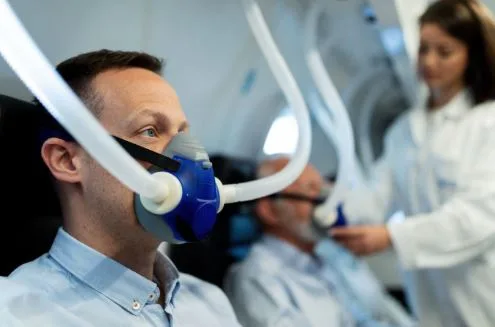Oxygen Therapy Demystified: Everything You Need to Know About Its Health Benefits
Introduction: Why Oxygen Therapy Matters More Than Ever
In today’s fast-evolving healthcare landscape, oxygen therapy is gaining renewed attention as a non-invasive, cost-effective solution for various medical and wellness conditions. Whether it’s treating chronic obstructive pulmonary disease (COPD), enhancing athletic recovery, or aiding cognitive function in aging adults, the breadth of oxygen therapy’s applications is growing rapidly. This comprehensive guide explores the science behind oxygen therapy, its benefits, usage scenarios, and what patients and wellness seekers need to know.
What Is Oxygen Therapy?
Oxygen therapy involves the administration of medical-grade oxygen to individuals whose oxygen levels are below normal. This can be delivered through nasal cannulas, face masks, or hyperbaric chambers depending on the medical condition and therapeutic goals.
According to Johns Hopkins Medicine, oxygen therapy is prescribed to ensure organs and tissues receive sufficient oxygen, particularly when natural breathing is compromised.
Common Conditions Treated With Oxygen Therapy
1. Chronic Respiratory Conditions
- COPD and Emphysema: One of the most prevalent uses of oxygen therapy is in treating individuals with chronic lung diseases.
- Pulmonary Fibrosis: Oxygen assists in alleviating symptoms such as shortness of breath and fatigue.
2. Acute Medical Situations
- Pneumonia
- Asthma attacks
- Heart failure-induced hypoxia
The American Lung Association recommends oxygen supplementation for patients experiencing severe breathlessness during exacerbations.
Hyperbaric Oxygen Therapy (HBOT): The Advanced Frontier
Hyperbaric oxygen therapy (HBOT) involves breathing pure oxygen in a pressurized chamber, which allows more oxygen to dissolve in the bloodstream. It is increasingly used for:
- Wound healing (especially diabetic foot ulcers)
- Carbon monoxide poisoning
- Radiation injury recovery
Internal link reference: Learn more about Hyperbaric Oxygen.
How Oxygen Therapy Enhances Health and Wellness
1. Improves Cellular Function
Increased oxygen availability supports energy production at the mitochondrial level, improving overall cellular efficiency.
2. Reduces Inflammation
Oxygen has been shown to suppress pro-inflammatory cytokines, aiding recovery in various conditions.
3. Enhances Cognitive Performance
Older adults and individuals recovering from strokes often report better concentration and memory post-therapy.
A study published in Frontiers in Aging Neuroscience supports HBOT’s potential in reversing cognitive decline associated with aging.
Who Should Consider Oxygen Therapy?
1. Patients With Documented Hypoxemia
Oxygen therapy is essential for those with arterial oxygen saturation below 88% as verified through pulse oximetry or arterial blood gas (ABG) analysis.
2. Athletes and Biohackers
Used post-workout or during recovery periods to reduce oxidative stress and improve muscle regeneration.
3. Seniors and Individuals With Cognitive Decline
Emerging research supports oxygen therapy for improving neuroplasticity and cognitive recovery.
How Oxygen Therapy Is Delivered
- Nasal Cannula: Most commonly used for low-flow oxygen delivery.
- Face Mask: Suitable for higher concentrations.
- Oxygen Concentrators: Ideal for home use.
- Hyperbaric Chambers: Used under medical supervision in clinical settings.
Safety, Risks, and Side Effects
While generally safe, oxygen therapy must be monitored for:
- Oxygen toxicity: Rare, but may occur in high-pressure settings.
- Dry nose or mouth
- Fire hazards: Especially in home environments with smoking or open flames.
The FDA offers safety guidelines for those using oxygen therapy at home.
Future Trends in Oxygen Therapy
- Portable and wearable oxygen devices
- Integration with digital health tracking
- Combined therapies using oxygen and light (photobiomodulation)
According to a report by Global Market Insights, the oxygen therapy market is expected to exceed $15 billion by 2032.
Conclusion: Is Oxygen Therapy Right for You?
Whether you’re battling a chronic illness or simply seeking to enhance recovery and performance, oxygen therapy offers scientifically-backed solutions with a growing track record of success. However, it’s vital to undergo therapy under proper medical supervision, ensuring it’s tailored to your individual needs. With increasing accessibility and technological innovations, oxygen therapy is well-positioned to become a cornerstone of integrative healthcare.




